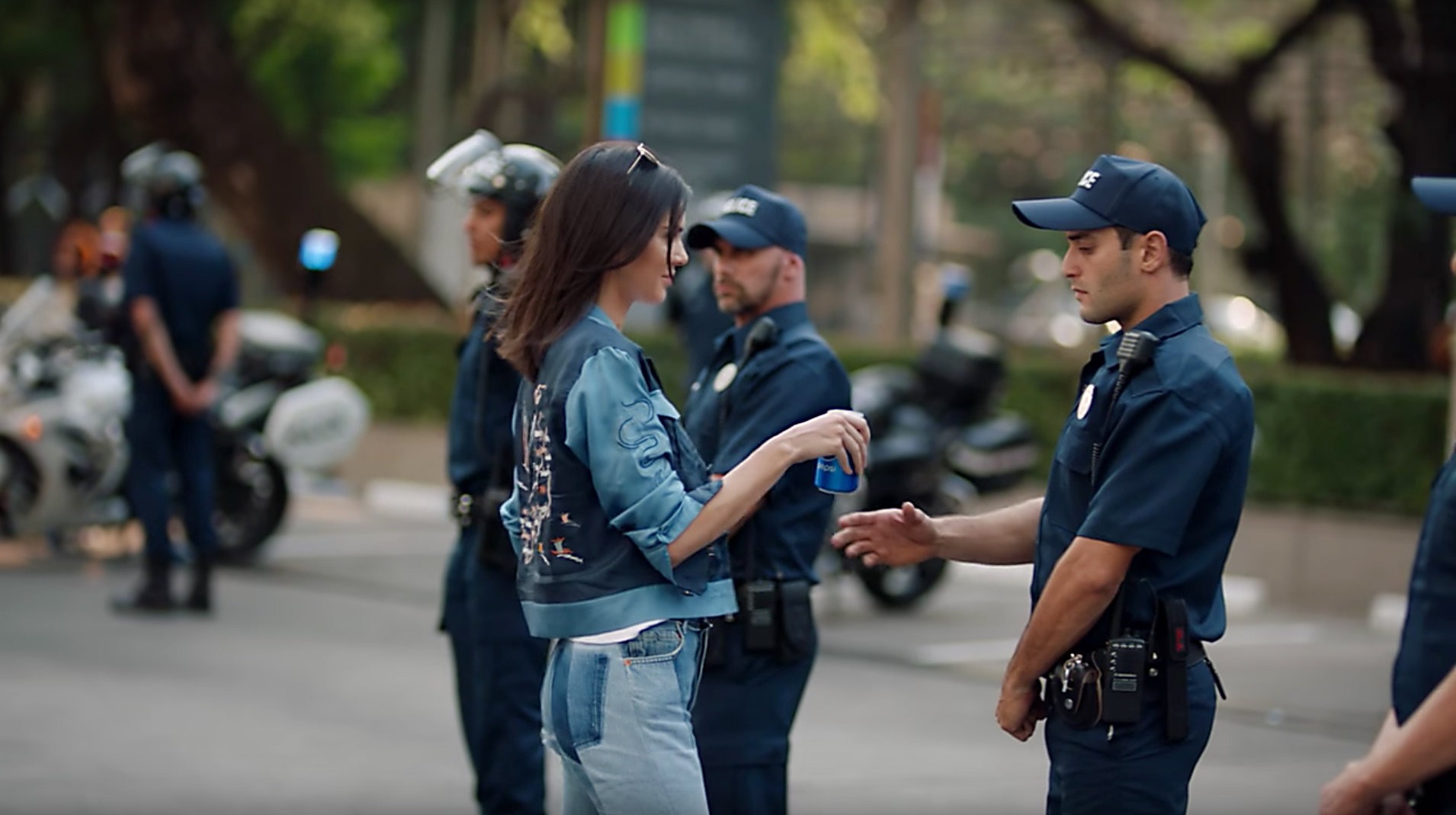want expert advice on your website? get in touch for a free website audit
book your free website audit
Marketing fails happen all the time. Whether it’s a typo on a social media caption or forgetting to add a section to a new blog post. These are small just small mistakes with easy fixes. However, some marketing fails can turn into full-blown PR crises. From insensitive ad campaigns to “WTF were they thinking” moments, these mishaps can be extremely detrimental to a brand.
The reason why so many marketing campaigns fail is due to a number of reasons. Lack of market research, poor execution, bad timing, just to name a few. Making these mistakes can ruin a brand’s reputation and one wrong move can undo years of hard work. Despite the best intentions, marketing fails can happen to any business, even the most well-established ones.
In this blog, I cover some of the worst marketing fails of all time, some of which you may even recognise. I also cover the impact bad marketing campaigns have on a brand as well as how to recover from it.
Pepsi’s Kendall Jenner Ad (2017):
When I think of marketing fails, the first one that springs to mind is the Kendall Jenner Pepsi Ad. I think we all know which one I’m talking about, but just in case you live under a rock, here’s a quick rundown.
The ad involved Kendall Jenner handing a police officer a can of as a gesture of peace during a street protest in an attempt to calm the protest. The ad sparked a lot of controversy and was highly criticised. People found the ad to be highly insensitive and tone-deaf.
Many were quick to call out Pepsi for using Jenner, a privileged white celebrity, to be a representative for the Black Lives Matter movement. People felt like the company was trying to cash in on these important issues without taking a stand or truly understanding what they were about. Instead of actually tackling the issues, it seemed like Pepsi was using the imagery and language or protests just to sell their products. People were pretty fired up, accusing Pepsi of trying to profit off of activism without really understanding or standing up for the causes they were trying to align themselves with.
As a result, the company ad was removed and pulled from air and YouTube within mere days and has since apologised. However, despite this, the damage had already been done. The company faced widespread criticism and the ad was widely mocked and parodied, becoming a cautionary tale of how not to approach social justice issues in advertising.
Pepsi also released a statement that read: “Pepsi was trying to project a global message of unity, peace and understanding. Clearly, we missed the mark, and we apologize. We did not intend to make light of any serious issue. We are removing the content and halting any further rollout. We also apologize for putting Kendall Jenner in this position.”
Nivea’s “White is Purity” (2017):
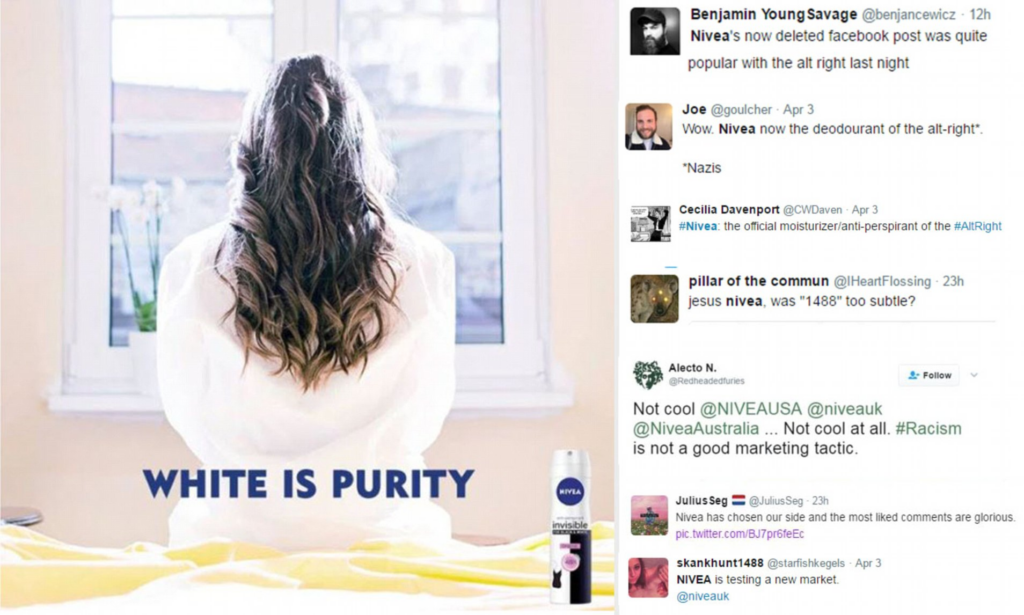
Nivea’s “White is Purity” campaign, launched in the Middle East caused an uproar and sparked a lot of backlash for its racially insensitive implications. The campaign, which was posted to the company’s Facebook, was a way to hype up their new deodorant line titled “Invisible: For Black and White” with the slogan “White is Purity.” People were enraged at the slogan as many saw it as a very loaded message, especially considering the historical baggage it carries and the harm it can do to people of colour.
The ad stirred up controversy because it seemed to suggest that white skin equals purity, which didn’t sit well with a lot of people. Many took to social media to express their outrage and call for a boycott of Nivea products.
Nivea issued an apology and did some quick damage control after the campaign went viral for all the wrong reasons. Originally, they had big plans for a full-print launch in the Middle East, with a focus on Iran. But after just two days of the ad being up on their Middle-East Facebook page, they put a halt to all of it. They tried to clarify, saying they were just trying to promote their “Invisible for Black & White”deodorant, which does not leave white marks on dark clothing. But by then, the damage had been done.
This very campaign was a huge wake-up call for brands to be aware of the diverse perspectives of their audience and the potential impact of their words and imagery. It also showed how social media has the power to hold brands accountable and amplify voices speaking out against harmful stereotypes.
Moving forward, it’s clear that brands need to do better. Brands must consult with diverse groups to make sure their messaging is respectful and inclusive of all communities.
Bic For Her (2012):

Ever seen a marketing campaign that just felt like a blatant “April Fools” joke, but wasn’t actually joking? Well, that’s exactly how I felt when I first saw Bic for Her.
Bic for Her was a product line introduced by the well-known pen company Bic in an attempt to target a female demographic. They released pens with a “skinnier barrel for a better fit in a lady’s hand,” or so they claimed. The slogans they used, like “Look Like a Girl” and “Think Like a Man,” got a ton of eye rolls and facepalms online.
The brand got dragged for its gendered approach as many perceived the product as unnecessary and even condescending. I mean, come on, women used the same pens as men with no issue. It’s quite obvious that this was a failed attempt to boost sales by splitting their market.
What added fuel to the fire was when talk show host Ellen DeGeneres called out the product on her show to show her fans how ridiculous the product was. This only garnered more hate towards the pen company as millions of people were now aware of the company’s marketing flop.
Despite Bic’s intentions to cater to a new demographic with their Bic for Her pens, it just didn’t work out. Consumers rejected the idea that pens needed to be gendered. The company’s move to make a special pen just for women ended up pushing people away instead of bringing them in, which messed with their reputation.
The backlash was so severe that the product ended up becoming a textbook example of how not to market gender-specific products. It shows why it’s super important to understand what your audience wants without needing to resort to outdated stereotypes.
Brewdog World Cup “Anti-sponsor” (2022):
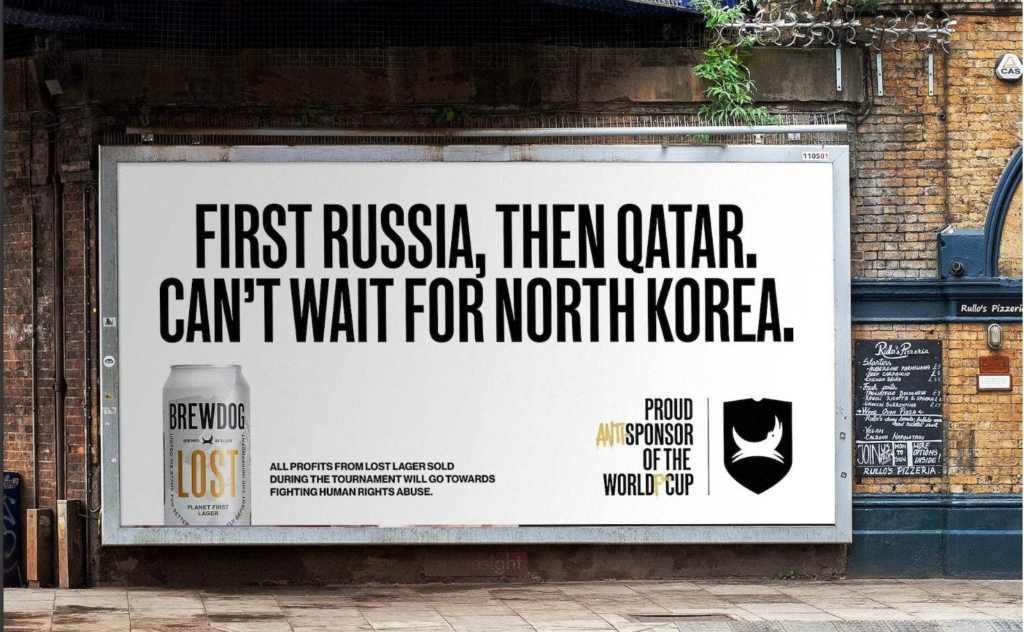
Brewdog World Cup “Anti-sponsor” accused of hypocrisy over World Cup ‘anti-sponsorship’ campaign. They went all out, plastering London with bold ads basically calling out the hypocrisy of the whole event. The ads, cooked up by Saatchi & Saatchi UK, didn’t hold back, with slogans like ‘Proud anti-sponsor of the World F*Cup’ and ‘The Beautiful Shame.’
Explaining the campaign, a BrewDog release read: “Football is meant to be for everyone. But in Qatar, homosexuality is illegal, flogging is an accepted form of punishment, and it’s OK for 6,500 workers to die building your stadium.”
However, many people were quick to point out the fact that they would still continue to show matches at its venues, showing that the campaign was disingenuous and that they don’t really care about the cause they’re preaching about. The campaign had been labelled as ’empty self-promotion’ after it was revealed the group would continue to show matches at its venues.
Sure, they’re shining a light on important issues, but if they’re not backing it up with real action, it just feels disingenuous. It’s like saying one thing and doing another. And with social media, people aren’t shy about calling out that kind of hypocrisy.
Huggies: The Dad Test (2012):
Huggies came under fire for a commercial that many critics felt portrayed fathers in a negative light. They called it “The Dad Test,” but it felt more like a jab at dads everywhere. The ad, released in 2012, depicted a group of dads who were struggling to change their babies’ diapers. In the ad, the dads rely on the help of Huggies’ new diaper design.
Now, I get that they were trying to highlight the product’s features, but they totally missed the mark. The were they portrayed the fathers as incompetent caregivers in their commercial made it seem that the company viewed all dads in the same light. This struck a nerve with many viewers. Dads all over took to the internet to show their disappointment with the campaign, feeling that played into harmful stereotypes about dads and their parenting abilities. It also left out families with two dads or single dads altogether.
Social media, especially, lit up with criticism, with dad bloggers even launching a petition called “We’re Dads, Huggies. Not Dummies.” It received more than a thousand signatures, showing just how big of a misstep it was.
Huggies issued a public apology in response to the backlash, acknowledging that the ad missed the mark and has since changed the overall messaging of the ad to spotlight real dads and their kids putting Huggies to the test rather than dads getting put to the test.
You may also like: The Best Marketing Campaigns Of 2023!
Airbnb: Floating World Email (2017):

When Airbnb unleashed their “Floating World” campaign into the wild via email, they had no clue they were about to go viral for all the wrong reasons. As their promotion hit inboxes, Hurricane Harvey was wreaking havoc in Texas, causing all kinds of devastation. Talk about terrible timing. Despite the email being planned and scheduled ahead of time, the email unfortunately went out as Hurricane Harvey was severely impacting Houston.
A lot of people gave Airbnb flak for the campaign’s insensitivity and lack of awareness of its marketing strategy. However, the brand’s response to the backlash was quick and apologetic. Airbnb issued a public statement explaining that the email was pre-scheduled and they had not anticipated the natural disaster. They also helped house those who were affected by the Hurricane.
PureGym, “12 Years a Slave Workout” (2020):
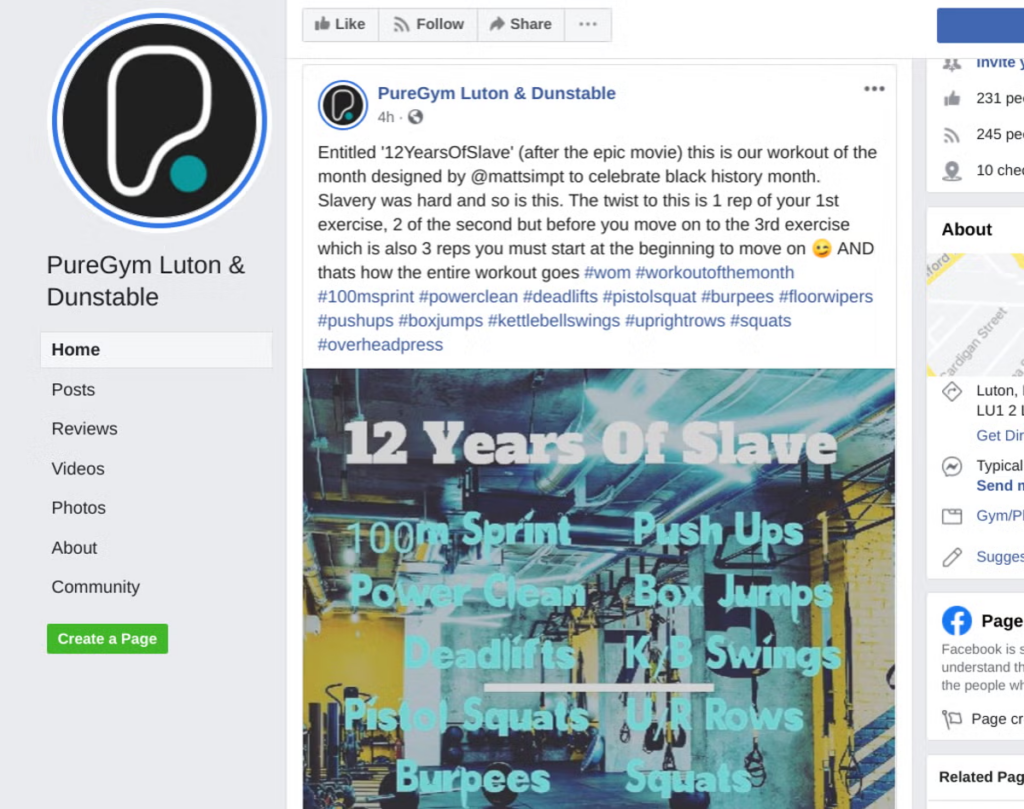
In an attempt to celebrate Black History Month, PureGym’s “12 Years a Slave Workout” ended up being a monumental flop. The gym chain attempted to promote a high-intensity workout inspired by the Oscar-winning film but instead created a stir of controversy and anger among consumers. On their Luton & Dunstable Facebook post, which they have since wiped, they shared that the workout was designed by a personal trainer called Matt Simpson to celebrate Black History Month, which takes place throughout October.
The use of the film’s title, “12 Years a Slave,” to market a workout didn’t sit well with people at all, especially during such an important month. A lot of people slammed PureGym for making light of the brutal history of slavery and turning it into a marketing gimmick.
After the outcry, PureGym apologised stating that it was “wholly unacceptable” and was “not approved or endorsed by the company”. PureGym later tweeted to say it was investigating why the post was made. The ad quickly spread across social media platforms, sparking widespread outrage and calls for a public apology from PureGym. The gym chain’s attempt at a clever marketing strategy backfired spectacularly, resulting in a public relations nightmare.
Burger King’s Last Ten Years Of Bad Marketing Fails:
Over the last decade, Burger King has had its fair share of marketing blunders that have left customers wondering what they were thinking. From tone-dead advertising campaigns to ill-judged product launches, here’s a closer look at the fast food chain’s last 10 years of bad marketing fails.
Starting off in 2010, with their “Moldy Whopper” campaign where they left their signature Whopper out to decompose in the open air, aiming to show they were ditching preservatives. But instead of getting a round of applause, all they heard were people saying “Gross” and “Ridiculous.”
Then there was the “Real Meals” slip-up in 2019, where they teamed up with nonprofit Mental Health America to toll out mood-inspired meals to support Mental Health Awareness Month. But the idea of a “Pissed Meal” or “DGAF Meal” didn’t sit well with many, who saw it as insensitive and exploitative.

Fast forward to 2022, and Burger King tried to show support for LGBTQ rights with the “Proud Whopper.” But offering a burger with “two equal buns” didn’t quite hit the mark, leaving many feeling it was a shallow attempt to cash in on social issues.
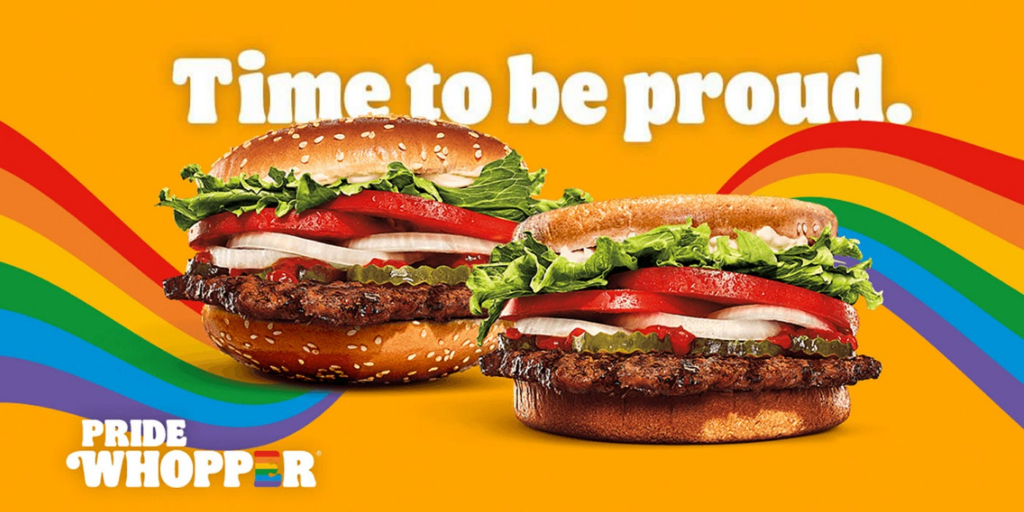
And that’s not even scratching the surface. With stunts like the “Poopy Ice Cream” and the “Women belong in the kitchen” fiasco, Burger King’s marketing missteps have been anything but appetising.
Coca-Cola’s ‘New Coke’ (1985):

In April 1985, Coca-Cola made a wild decision to change up their classic recipe for their flagship product, which had been successful for over 100 years. The new product, dubbed ‘New Coke’, was sweeter and smoother than the original, in an attempt to compete with the growing popularity of rival brands like Pepsi. However, the decision turned out to be a marketing blunder that would go down in history as one of the biggest blunders in the industry.
Customers were not happy about the change, with many loyal Coca-Cola lovers feeling betrayed by the company’s decision to alter a beloved classic. The backlash was so severe that Coca-Cola got bombarded with over 40,000 complaints in just a few months. Some die-hard fans even started hoarding the original formula, creating a black market for “old” coke. This just shows you don’t mess with a cult classic drink, without expecting some serious pushback.
Realising their mistake, Coca-Cola quickly backpedalled and bought back the original formula under the name “Coca-Cola Classic” just months after the launch of New Coke. People were ecstatic at the news, and it felt like a sigh of relief for many Coca-Cola enthusiasts who were feeling a little betrayed.
However, even though they tried to make things right, the damage had already been done. The New Coke distaste left a stain on the company’s reputation and would haunt them for years to come. People would continue to talk about it to this day, and you’re reading about it right now!
The failure of New Coke taught Coca-Cola some serious lessons about the value of brand loyalty and the dangers of messing with a beloved product. They learned the hard way just how strong people’s emotional connection to their favourite brands can be. It showed that the loyalty your customers have towards your brand is worth so much simply competing with your competitors. This is why it is important for every brand to put their customers first and worry about what their competitors are up to later.
Tropicana’s Packaging Disaster (2009):

Back in 2009, Tropicana decided to give its orange juice packaging a modern makeover, but it quickly turned into a marketing fail. They poured over $35 million into designing and promoting the new look, but when it hit the shelves, their audience was not happy.
Customers were left scratching their heads in the aisles, unable to spot their beloved Tropicana among the sea of new packaging. Why? Because people were looking for the iconic image of the plump orange with the red-and-white straw.
To make matters worse, the backlash hit social media hard, with tons of unhappy customers voicing their opinions online on how they felt about the new packaging.
The consequences were brutal. Tropicana’s sales plummeted by a whopping 20%, sending droves of customers straight into the arms of their competitors. It was a costly mistake, resulting in millions of dollars down the drain. The brand had to swallow their pride and admit defeat, reverting back to the original packaging in a desperate attempt to salvage what was left of its reputation.
How Do Marketing Fails Impact Brand Reputation?
Marketing fails can do a lot of damage to your brand’s reputation. When you misstep with a marketing campaign – whether it’s by being tone-deaf, poorly executed, or just totally missing the target audience – it can backfire on you big time. Consumers today are quick to call out brands for their mistakes and aren’t afraid to voice their opinions on social platforms. This can result in a tarnished brand image, and once trust and credibility are lost, it’s an uphill battle to win back customers’ trust.
One of the most common ways that marketing disasters can impact a brand’s reputation is through insensitive ad campaigns. This happens when a brand drops the ball with its ads and ends up offending or alienating a portion of its audience. When this happens, it’s very hard for brands to regain their customer’s trust and they will start looking for alternatives to your brand.
This is especially the case today, where everyone’s hyper-aware of social issues. Brands need to be extra careful about how their messaging comes across, otherwise, they risk offending their customers and losing out on sales and market share.
Once a company’s reputation takes a hit, it’s tough to bounce back. That’s why it’s so important for companies to double-check the messages they’re putting out. By staying up-to-date with what their audience cares about, you can hopefully avoid a PR nightmare.
What Are The Common reasons behind failed marketing campaigns?
Marketing campaigns are some of the best ways businesses can spread the word and reel in new customers. However, not all campaigns are successful and there are some pretty common reasons:
- Poor messaging: Poor messaging is a really common reason behind marketing fails. This is because if you’re not getting your message right, your campaign can end up sounding way different from what you intended, which can really ruffle some feathers.
- Lack of understanding of the target audience: Understanding your audience is Marketing 101. Failing to understand the needs and preferences of your target audience can end up leading to campaigns that backfire, especially with potential customers. It’s crucial to really get into the heads of your target customers. Otherwise, you’re just shouting into the void.
- Insensitivity to social movements or recent conversations: Ignoring social movements or current conversations is a recipe for disaster. As a marketer, you must be vigilant in identifying warning signs early on to adjust and salvage the campaign.
- Misinterpreting data or relying on outdated Information: Lastly, relying on outdated info or misreading the data is a surefire way to have your campaigns fail. This is why, you have to stay sharp, analyse well, and keep updated for successful campaigns.
- Poor decision-making: Many advertising mishaps happen as a result of poor decision-making. Without careful planning and setting the groundwork, your whole campaign can come crashing down.
How Can Companies Recover From Major Marketing Failures?
Marketing failures can happen to businesses of all sizes, but what really matters is how you bounce back from it. When things go south, it is important for you to jump into action and mitigate any potential damage to your brand
First things first, you need to analyse what went wrong and find the root cause of the failure. Then comes the detective work – figuring out what went wrong and why. This could involve conducting a thorough audit of your marketing strategy, messaging, target audience, and any external factors that might have come into play.
Once you’ve got a handle on the root cause, it’s time to put together a recovery plan. This will help to build back customer trust and loyalty. Some of the things you could do include reaching out to customers about what you’re doing to address the failure, offering refunds or discounts to make things right, and even launching a whole new campaign to get back into their good books. You need to show customers you’re serious about making things right and winning back their trust.
Acknowledge the situation and Issue an Apology:
Issue an apology when you realise your mistake. But, Saying sorry isn’t enough. You need to show you’re committed to making meaningful changes to prevent similar incidents from happening again. Here are a couple of things you can do to prove to your audience that you’re setting things right:
- Implement new procedures to make sure the same mistake doesn’t happen again.
- Beef up your training so that everyone on your team is on the same page.
- Listen to your customers, especially those who were affected by your mistake.
You need to stay committed to getting better and learning from your marketing fails in order to have a brighter future for your business.
What To Learn From Bad Marketing Mistakes:
Marketing fails are great ways to learn a thing or two about your marketing strategy. By digging into what went wrong in a campaign, you can figure out how to steer clear of those pitfalls next time around. It’s all about turning those slip-ups into opportunities for improvement.
Better Understanding Of Your Target Audience:
One important lesson to take away from marketing fails is the importance of researching and understanding your target audience. Without fully understanding who you are trying to reach, your campaigns are prone to failing. A couple of ways you can get a deep understanding of your target audience are:
- Conduct surveys
- Gather customer feedback
- Analyse social media engagement
- Monitor online forums and communities that are closely related to your niche
- Collaborate with industry leaders to gain more insight
- Keep a close eye on your competitor’s audience and how they behave
- Conduct market research to identify trends and patterns
Clear Messaging And Branding:
Clear messaging and branding are the backbone of any good marketing campaign. When you end up with confusing or inconsistent messaging, you throw a wrench into your whole operation. Your audience gets confused, and your whole marketing campaign loses its punch and weakens its impact.
Testing And Analysing Data:
Another key lesson to learn from marketing failures is the importance of testing and analysing your data. When you test your marketing campaigns, you get the lowdown on what’s working and what’s not.
A/B testing is a great method to give you the lowdown on what clicks with your audience and what falls flat. You should also keep a close eye on your analytics so that you can always have your finger on the pulse in case you need to make any changes.
Without this insight, you’re essentially shooting in the dark when it comes to your marketing strategy – wasting time and resources on ineffective campaigns.
Staying True to Brand Values:
Bad marketing campaigns often highlight the importance of staying true to your brand values. When you stray from your brand values or try to force a message that’s not authentic, customers are quick to notice and won’t buy into your message. By taking notes on your mistakes, you can improve your marketing efforts and deliver campaigns that hit home with your audience.
Continuous Improvement:
When a marketing mistake happens, it showcases the importance of continuous improvement. As a marketer, you have to stay sharp and adapt to what’s going on in your industry. Trends change, consumer behaviour shifts, and what worked today may not work tomorrow. That’s why it’s important to embrace a mindset of continuous improvement. Always looking for new ideas and approaches to stay ahead of the competition and please your audience.
You may also like: 11 Costly Social Media Marketing Mistakes to Avoid!
Common Marketing Fails FAQs:
FAQ: What Is The Role Of Social Media In Amplifying Marketing Fails?
Social media plays a huge role in amplifying marketing fails and spreading the word. One tweet or post can slowly snowball into a huge wave of opinions, criticisms, and, of course, memes. The issue with social media is that things can get out of hand pretty fast, meaning businesses need to act fast to de-escalate the situation.
FAQ: What Steps Can Companies Take To Ensure That Their Marketing Campaigns Are Culturally Sensitive And Inclusive?
Making sure that marketing campaigns are culturally sensitive and inclusive is key for businesses to reach a diverse audience. One important step companies should take is to take the time to research their target audience – learning about their cultures, values, etc. Knowing your audience’s preferences lets you craft a message that resonates with them.
Another important step is to partner up with local organisations or consultants who know the ins and outs of the topic you’re creating the campaign for. These partnerships can provide insider knowledge and help steer the campaign in the right direction, making sure it’s respectful and inclusive.
Bringing in focus groups from all walks of life to test out your marketing materials is another smart move businesses can take. You get a sneak peek into how your campaign might land as well as gather feedback and make necessary adjustments. And when you involve them in the creative process, it allows you to bring in unique perspectives and insights that create a respectful message.
FAQ: How Can Marketing Professionals Stay Up-To-Date On Changing Consumer Attitudes And Behaviours So That Their Plans Can Be Adjusted Accordingly?
Marketing pros keep up with shifts in consumer attitudes and behaviours in various ways. One way is to monitor social media platforms and online forums. These platforms offer a wealth of insights into customer conversations, feedback, and feelings about products or brands. By actively engaging with customers online, marketers can spot trends, tackle issues, and tweak strategies in real-time to foster stronger connections with their audience.
On top of that, attending industry conferences, seminars, and workshops allows marketers to network with peers, pick the brains of industry gurus, and stay up-to-date on the latest industry trends. Being part of these events helps marketing professionals soak valuable information and team up with ideas to create fresh strategies that resonate with changing consumer attitudes.
